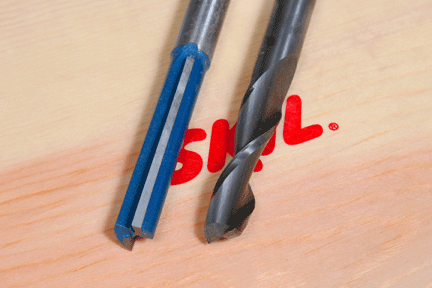
In preparation for doing some mortise and tenon work, I’ve gone through the archives and read all I could find on upcut spiral bits.This exercise did not leave me with significant confidence that the spiral bits offer a big advantage over the straight bits. What is the current consensus of opinion about these bits? Are they in fact superior enough to the straight bits, for mortising application, to justify their high price? Also if you were to buy one or two bits, what sizes would you buy?
Rob Johnstone: While I don’t have a great deal of experience with spiral bits (up-cut or down-cut), that has never prevented me from having an opinion. But instead of waxing eloquent and dazzling you with rhetoric, I decided to ask somebody who would know. I called Dan Sherman of CMT USA, an importer of quality router bits, and asked him. Dan suggested that mortising is not a strong point for spiral bits. Instead, it makes more sense to use them for jobs where you need the bit to stay sharp longer and where it will be exposed to more heat build-up than their straight bit counterparts. Spiral bits are at their best in edge-routing situations where tear-out is an important consideration: e.g. materials like melamine, plastic laminate, etc.
Ian Kirby: It depends on what you mean by big advantage. Spiral bits cut more smoothly and they leave a smoother wall surface. That helps if you need to glue something to the surface, which is important to me. I have two suggestions:
1. Set up a drill press and remove the bulk of the waste before you route. By doing that, you get rid of about 85 percent of the material you want taken off quickly and easily.
2. Consider using a loose tennon and not a motise and tennon. Both parts come from the same bit and you can easily adjust the fence system for each piece. The router, in effect, then becomes a slot motiser.
Finally, just buy one size bit. Make a left and right fence; then you can make any width of mortise using one bit.





